PLACES NEARBY
-
Victory Park
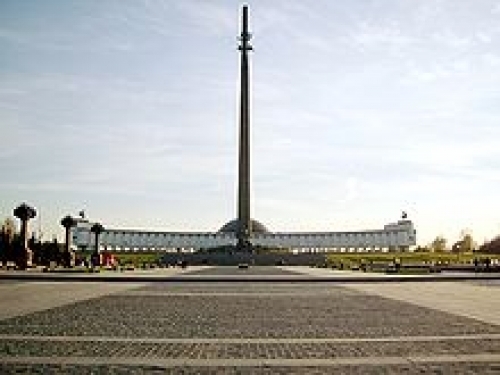
The Museum of the Great Patriotic War is a history museum located in Moscow at Poklonnaya Gora. The building was designed by architect Anatoly Polyansky.Work on the museum began on March 3, 1986, and the museum was opened to the public on May 9, 1995.The museum features exhibits and memorials concerning World War II, known in Russia as "The Great Patriotic War".
The museum features 14,143 square meters of exhibit space for permanent collections and an additional 5,500 square meters for temporary exhibits.Near the entry to the museum is the Hall of Commanders, which features a decorative "Sword and Shield of Victory" and bronze busts of recipients of the Order of Victory, the highest military honor awarded by the Soviet Union.
In the center of the museum is the Hall of Glory, a white marble room which features the names of over 11,800 of the recipients of the Hero of the Soviet Union distinction. A large bronze sculpture, the "Soldier of Victory," stands in the center of this hall. Below lies the Hall of Remembrance and Sorrow, which honors Soviet people who died in the war. This room is dimly lit and strings of glass beads hang from the ceiling, symbolizing tears shed for the dead.
The upper floors feature numerous exhibits about the war, including dioramas depicting major battles, photographs of wartime activities, weapons and munitions, uniforms, awards, newsreels, letters from the battlefront, and model aircraft. In addition, the museum maintains an electronic "memory book" which attempts to record the name and fate of every Russian soldier who died in World War II.
-
Gorky Park
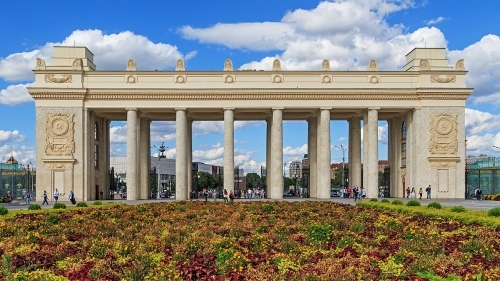
Gorky Park, located at Krymsky Val (ru) and situated just across the Moskva River from Park Kultury Metro station, opened in 1928. The park followed the plan of Konstantin Melnikov, a world-famous Soviet avant-garde and constructivist architect, and amalgamated the extensive gardens of the old Golitsyn Hospital (ru) and of the Neskuchny Palace, covering an area of 300 acres (120 ha) along the river.[1] The history of the Neskuchny Garden can be traced back to 1753, when it emerged in the area between Kaluzhskaya Zastava and Trubetskoy Moskva river-side estate. The neighboring area to Neskuchny Garden, from Krymsky Val to Neskuchny Garden, received little attention right up until the 1920s. Initially it was covered with park gardens, meadows and vegetable gardens belonging to the owners of neighboring estates. It formed a wasteland by the end of the 19th century, and served as a waste heap.
The First All-Russian Agricultural and Handicraft Industries Exhibition opened in 1923 on the wasteland that had been cleared during the course of communist community work days. A resolution for the exhibition was passed[by whom?] on 19 October 1922 and the exhibition opened one and a half years later on 19 May 1923. After bidding for the exhibition's layout plan, which proposed four arrangements — Sokol, Khodynskoye Pole, Petrovsko-Razumovsky park and the river areas near Krymsky bridge — preference was given to the last option.
On 15 March 1928 by a resolution of the Presidium of the Moscow Council, the Agricultural and Handicraft Industries Exhibition was enlarged and transformed into the Central Park of Culture and Leisure — the country’s first park of its kind, which was referred to as an outdoor "cultural enterprise". In 1932 the park was named after M.A. Gorky. The idea of a need for a central park of culture and leisure in Moscow arose in the late 1920s in relation to Moscow's reconstruction with notions of a socialist "city of the future".
-
Ostankino (TV tower)
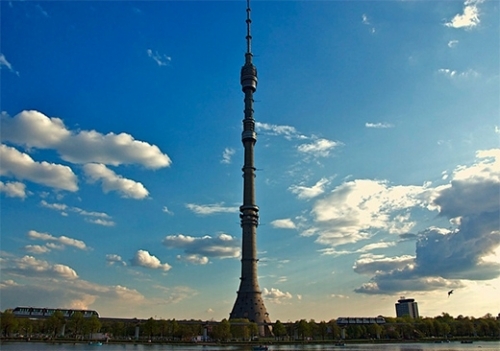
Built in 1967 upon the project of Soviet engineer Nikitin, N.V., Ostankino Tower, reaching the height of 540 meters, it became an architectural and engineering milestone of its time.Ostankino Tower, being created for transmission of television and radio signals to new distances, remains of key importance up to present days.
Nowadays, Ostankino Tower is a part of the Branch of Russian Television and Radio Broadcasting Network, the leading Russian telecommunication agency.
Visiting Ostankino Tower is a perfect way to have a lively time and to get an unforgettable experience.
Rise at observation deck located at height of 337 meters with an exciting panoramic city view and try to find all landmark buildings of Moscow city (and may be your own house).
In recent times, Ostankino TV Tower is operated by the Russian Television and Radio Broadcasting Network (RTRS) and remains a non-compatible flagship of the national television and radio broadcasting. It keeps up to the times by adapting of the most advanced digital broadcasting technology and enabling residents of Moscow city and Moscow Area to watch TV programs in HD format. Availability of wide range of opportunities for implementation of various projects, including commercial ones, allows saying that activity of the company is a hybrid of traditional state management and modern multiple profile management, which is an important distinctive feature and main advantage of Moscow Regional Center.
-
Crocus City Oceanarium
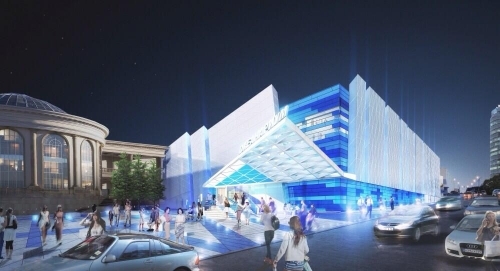
The Crocus City Oceanarium
Russian: Крокус Сити Океанариум
is located on the MKAD
Russian: МКАД
, or the Moscow Automobile Ring Road
Russian: Moskovskaya koltsevaya avtomobilnaya doroga or Московская кольцевая автомобильная дорога
, in North-West Moscow. This 10,000-square-meter oceanarium was opened in December 2016 inside the Crocus City Mall, a huge area containing exhibition pavilions, shopping centers, two concert halls, a rink and a yacht club. This iceberg-shaped oceanarium occupies three floors.
This museum is known as an “oceanarium”, but its exhibition covers not only marine and freshwater animals, but also birds, reptiles, monkeys and even comprises a butterfly garden. It is home to 5,000 species from all over the world and you will definitely need more than one visit to see everything. The exhibition is divided into three parts: Seas and Oceans
Russian: Morya i okeany or Моря и океаны
, Rivers and Lakes
Russian: Reki i ozera or Реки и озера
, and Jungles
Russian: Dzhungli or Джунгли
. A separate ticket is required for each of these exhibitions.The Seas and Oceans is the museum’s most picturesque section, with its seaside fauna, marine life and animals. The aquariums in the marine exhibition in Crocus City are 2,500,000 million liters in volume, the largest in Moscow. There is also a walk-through tunnel covered in glass where you can see fish swimming overhead.
Brightly-coloured tropical fish, morays, an octopus, starfish and sea urchins welcome visitors right at the entrance to the Seas and Oceans exhibition, followed by panoramic aquariums with huge reef groupers, manta rays, barracudas, sea turtles and other exciting species. Next is the Hall of Sharks. There are quite a few of them at the Oceanarium, although there are no large predators such as white or tiger sharks. There are many types of sharks, including leopard, sand, brown, blacktip, carpet and cat sharks on display. Other halls display ringed seals, Humboldt penguins and other large animals and birds. The Seas and Oceans exhibition ends in an open, light room with hornbills flying here and there and minuscule monkeys, birds and bats that live inside glass showcases. Along the way, you can see Papuan and Philippine hornbills, ring-tailed lemurs and all kinds of marmosets.
-
Moscow Zoo
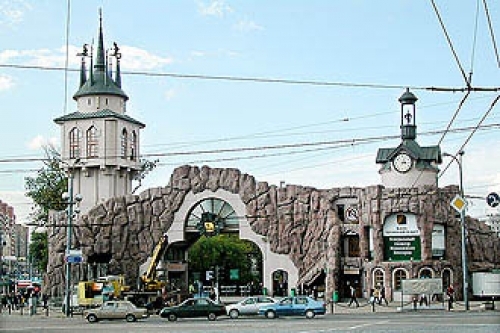
The idea for the Moscow Zoo was first put forward in 1857 by zoology Professor A.P. Bogadanov. The plan came to fruition 7 years later, when 300 animals, including 2 tigers and 2 lions, went on display. The Zoo's pavilions were made of wood and built in traditional Russian style, and up to 200,000 people a year came to visit. Nonetheless, the zoo suffered severe financial problems and, in the 1905 revolution, found itself the scene of heavy street-fighting during which the infrastructure was badly damaged and several of the animals perished.
After the Bolsheviks came to power, the zoo became state property, and considerably more funding was found. The zoo expanded rapidly, and in 1926 the New Territory was established on the other side of Bolshaya Gruzinskaya Ulitsa. The zoo now covers over 20 hectares in total. During the war, the zoo remained open and, from 1941 to 1945, received 6 million visitors.
By the eighties, the zoo was in a terrible condition due to decades of Soviet neglect, and it wasn't until 1991, when the new Moscow city government under Mayor Luzhkov took control, that serious reconstruction began. The results have been impressive.
The main entrance to the zoo, built in 1997 during wide scale reconstruction to mark Moscow's 850th anniversary, stands opposite Barrikadnaya Metro. It was made to look like a fairy-tale castle with towers and a waterfall. This leads to the old part of the zoo, where the highlights include the big cats, and a neat underground viewing space below the penguin pool, as well as the sea lion enclosure that lets you watch them swim from below.
A pedestrian bridge takes you across the street into the New Territory, the most interesting parts of which are probably the primate house and the tacky but fun children's zoo, where younger visitors get the chance to see animals from various fairytales, watch chicks hatching in an incubator, and pets some of the more docile domestic breeds.
In total, about 5,000 animals of 750 species are kept in the Zoo, making it Russia's largest. If you're coming to Moscow with young children, it's probably one of the best ways to keep them entertained. Be warned, though, that it can get very crowded on weekends.
Getting there: across the road from Barrikadnaya Metro Station.
Opening hours: Daily from 10:00 to 17:00 (20:00 in summer), closed on Mondays.
-
Fili park
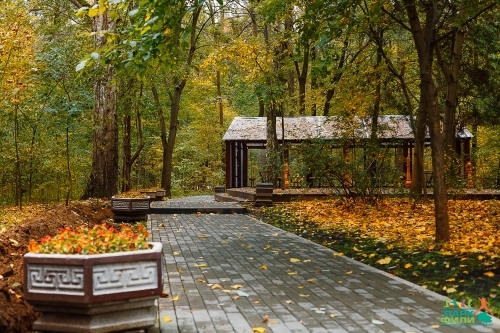
Fili Park is one of the largest ancient parks in Moscow.
This is a beautiful and comfortable place for rest, walking and sports. The park's territory is a reserved forest with rare species of plants, birds and animals.
In addition to the shady avenues and picturesque places of nature, you will be pleasantly surprised by the modern infrastructure of the park: specially equipped sports and children's playgrounds, a rope park, an amusement park, an art studio with various sections, a colorful embankment with a 7 km cycling route, cozy cafes with verandas.
In addition, the park operates year round rental of sports equipment.
In summer, you can visit the equipped beach with outdoor pools and a cinema. In the winter, three ski runs of different lengths are laid in the park, 2 ice rinks with artificial ice work.
-
Tretyakov Gallery
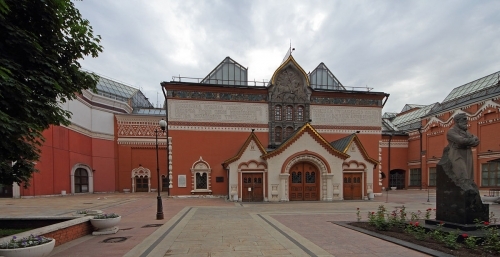
One of the world's greatest museums, this is probably the one to choose if you only want to visit one museum in Moscow. In contrast to the worldwide collection of the Pushkin Museum, the Tretyakov is mostly a collection of Russian art. It has the best collection of Russian icons and many of the most famous pieces of modern Russian artists like Ilya Repin. Metro: Tretyakovskaya or Novokuznetskaya.
-
Red Square
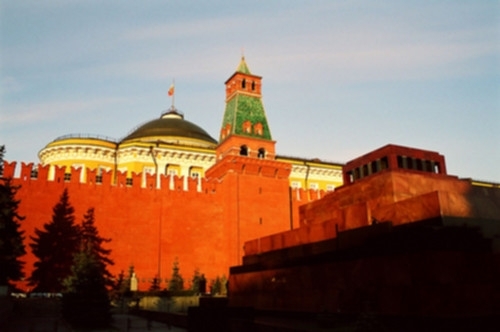
The heart of Moscow and the first destination for most visitors to the city. Surrounded by St. Basil's Cathedral, the State History Museum, Lenin's Mausoleum and one of the Kremlin's long brick walls. The cobbles that make up the square are black and not red; the name comes from another gloss of the Russian word "krasniy", meaning "beautiful". Metro: Ohotnii Ryad, Teatralnaya or Ploshad Revolutsii.
Lenin Mausoleum - in the centre of the Red Square. Walk past the embalmed body of Vladimir Lenin . You must leave all cameras, phones and bags in the luggage office. Free admission. Open 10AM-1PM Tu, W, Th, Sa; closed on Su, M, F.
St Basil Cathedral - in the south part of Red Square. Built in 1555-61. Inside is a museum, although it looks best from the outside, but if you have the time, take a peek inside.
-
VDNKh
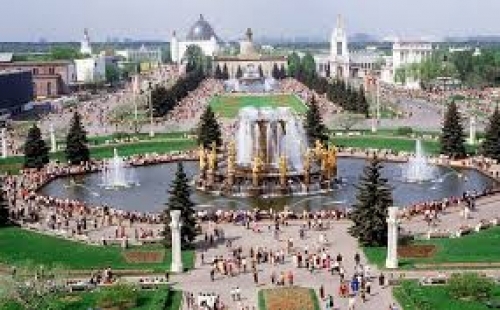
Vystavka Dostizheniy Narodnogo Khozyaystva (VDNKh) (Russian: Выставка достижений народного хозяйства, ВДНХ, pronounced [vɛ dɛ ɛn xa], lit. Exhibition of Achievements of National Economy) is a permanent general purpose trade show and amusement park in Moscow, Russia. Between 1991 and 2014 it was also called the All-Russia Exhibition Centre. It is a state joint-stock company.
VDNKh is located in Ostankinsky District of Moscow, less than a kilometer from Ostankino Tower. It is served by VDNKh subway station, as well as by Moscow Monorail. Cosmonauts Alley and the Worker and Kolkhoz Woman statue are situated just outside the main entrance to VDNKh. It also borders Moscow Botanical Garden and a smaller Ostankino Park, and in recent years the three parks served as a united park complex.
The exhibition was established February 17, 1935 as the All-Union Agricultural Exhibition (VSKhV) (Russian: Всесоюзная Сельско-Хозяйственная Выставка; Vsesoyuznaya Selsko-Khozyaystvennaya Vystavka). An existing site (then known as Ostankino Park, a country territory recently incorporated into the city limits), was approved in August 1935. The master plan by Vyacheslav Oltarzhevsky was approved in April 1936, and the first show season was announced to begin in July 1937 and was design as a "City of Exhibitions" with streets and public spaces, which was very common in the 1930s of the 20th century. However, plans did not materialise, and three weeks before the deadline Joseph Stalin personally postponed the exhibition by one year (to August 1938). It seemed that this time everything would be ready on time, but again the builders failed to complete their work, and regional authorities failed to select and deliver proper exhibits. Some pavilions and the 1937 entrance gates by Oltarzhevsky were torn down to be replaced with more appropriate structures (most pavilions were criticised for having no windows). According to Oltarzhevsky's original plan, all of the pavilions were to be constructed from wood. In 1938, a government commission examined the construction and decided that it did not suit the ideological direction of the moment. The exhibition was considered too modest and too temporary. Oltarzhevsky was arrested, together with the Commissar for Agriculture and his staff, and eventually released in 1943. Later, he worked on the 1947-1953 Moscow skyscraper project.
-
Experimentarium
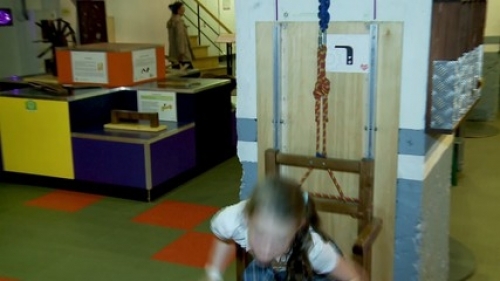
This museum is more an interactive classroom of infuriating puzzles, games and physics come to life. Designed with curious children in mind it’s a hands on place which aims to fascinate its guests with the wonders of science. Adults may find it slightly less entertaining than the average hyperactive kid, but will still be enticed by the musical room with its electric guitar and drum kit and those addictive building blocks. Unfortunately there are no English explanations so you will have to dig up some high school memories to recall just why ropes dance like that, how tornados are formed and what’s the logics behind all those magnets. The giant truck however is pretty much self-explanatory.
-
The Kremlin Museum Complex

Includes the Armoury Collection of royal clothing and chariots, the Diamond Fund, several churches, the Patriarch Palace and the Bell Tower (open only in the summer). Guided tours fill up fast and should be booked early. Photography is prohibited in many exhibits. RUB350-700
-
The Grand Kremlin Palace
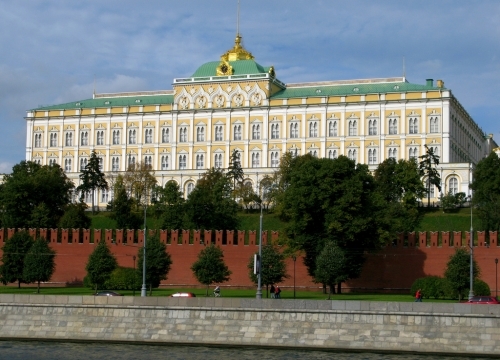
The official residence of the Russian President. A historic palace with rooms dating back to the 16th century. The exterior can be seen as part of a visit to the Kremlin Museum Complex. The interior is only open to the public by group tour two or three times a month and must be booked in advance. USD344+
-
Pushkin Museum
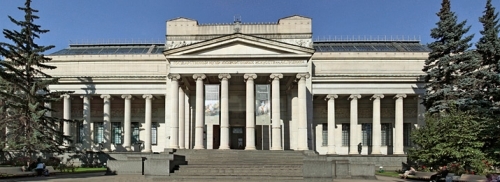
(ulitsa Volkhonka, 12) is dedicated to Western art and has one of the world's most significant Impressionist and Post-Impressionist collections, along with some Old Masters. The Impressionists and Post-Impressionists were rather unfortunately relocated to an annex in 2007 across the street from the main building. Metro: Kropotkinskaya
-
Victory Park
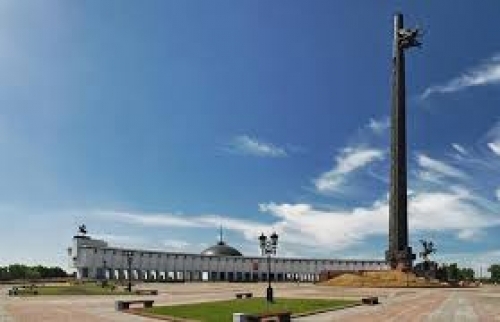
Victory Park was only completed in the mid-nineties, and is something of a last gasp for the Soviet tradition of monumental triumphal art. Located on and around the Poklonnaya Gora - the hill where Napoleon waited in vain to be given the keys to the city when his troops were surrounding Moscow in 1812 - the park is set in an area steeped in Russian military history.
Victory Park was initially laid out over an area of 98 hectares in 1961, although work on the creation of an architectural memorial was only mooted in the Politburo in 1983. Fortunately, the original plan - to level the hill and replace it with a 250-meter high column - was abandoned in the turbulent eighties, and only returned to under Yeltsin's government, when it was considered imperative to get the long-delayed project finished in time for the 50th anniversary of the end of the Great Patriotic War (1941-1945 - Russians have little interest in other countries' participation). Questions of taste left aside, the results are certainly impressive. The central avenue is called "Years of War": It has five terraces, symbolizing the five years of conflict, and there are 1,418 fountains - one for every day. It runs past a memorial chapel, mosque, and synagogue to the circular Victors' Place, which has a triangular obelisk soaring 150 meters and surmounted by a statue of Nike, the Goddess of Victory. Behind this lies the crescent-shaped Museum of the Great Patriotic War, which gives a detailed but staid overview of Russia's appalling loses and eventual victory.
On 9 May, Victory Day in Russia, the park becomes the center of Moscow's celebrations, and as many of the remaining veterans and survivors as can make there way here, along with scores of the younger generations. In Russia the emphasis is on celebration rather than remembrance, and this is one of the most popular public holidays.
-
Evrika Park
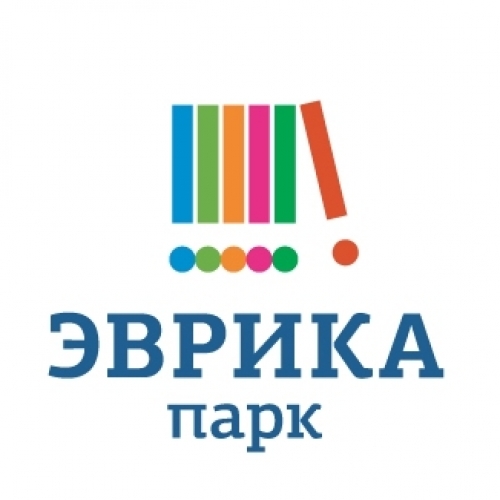
Evrika Park is an educational complex, offering clubs and classes to satisfy all needs and tastes. In the natural sciences section, kids learn to tell acids from alkali, grow multicoloured crystals, and train animals. At the DIY Cartoon Kitchen, trainees get so good at cartoon animation they will make a cartoon in just 1.5 hours using only matches, semolina, modelling clay, and anything else they can find. Other classes at Evrika Park will explain how planes fly, what carnivorous plants eat, reveal the secrets of sleuthing, and illuminate many other things. The titles of the programmes are self-evident: Life Under the Microscope, Chemistry: Miraculous Transformations, Mysteries of Sight, Sleuth of Genius, Trick Academy, The Physics of a Miracle, Mathematics: How Man and Machine Calculate, How Planes Fly, Predator Plants, etc. Each programme is 1.5 to 2 hours long. The time-table is on the website, and you can sign up online. The youngest kids (4 or older) are welcome to attend robotics classes. In the section named Biopark, kids study animals and plants and take care of them
-
THE MUSEUM OF COSMONAUTICS

History of the Soviet and Russian astronautics. Konstantin Tsiolkovsky’s projects for fulfilling a man’s dream about space flights. First research bureaus and the Soviet rocket industry development. Chief designer Sergei Korolev, the founder of practical astronautics. First artificial Earth satellites. Space flight of the first cosmonaut, launches of the space probes towards the Moon and Solar System planets. Triumphal victories and great achievements. Long-functioning space stations. International cooperation in space. Modern cosmodromes and rockets.
- Quick Links
- Staff List
- Contact Us
- Fee Payment
- Photo Gallery
- Downloads
- Utilities
- Site Map
- Disclaimer
- Visitor's Guide
- Report a Bug
- KVCMSx6


